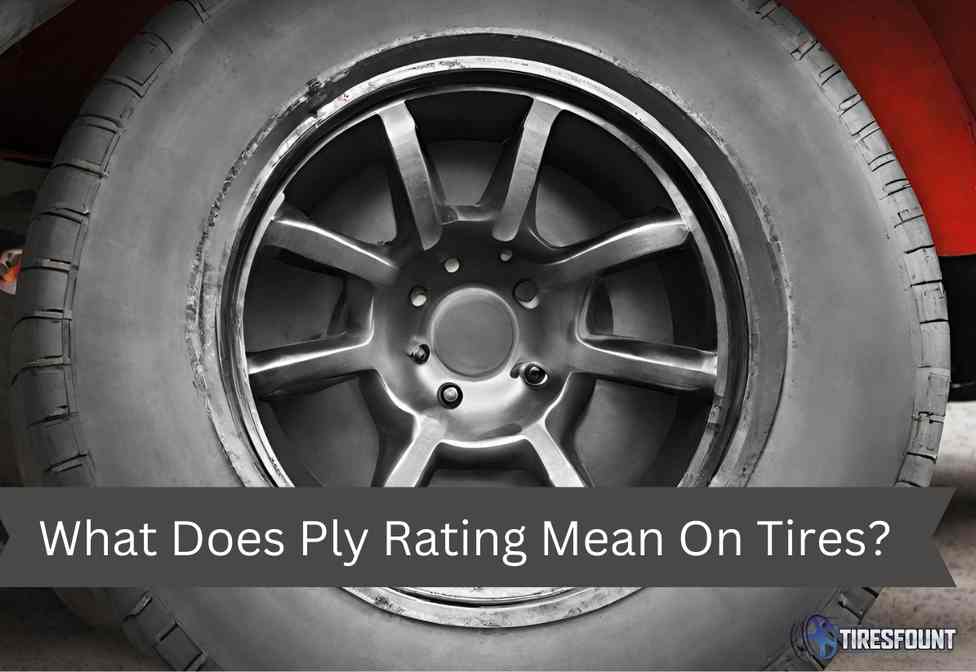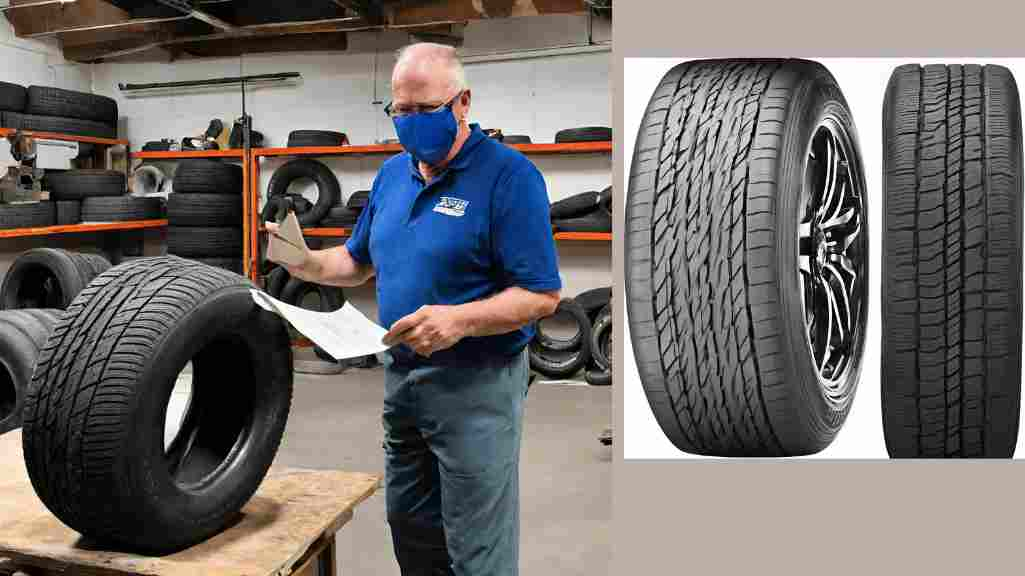Ply rating on tires reflects a tire’s strength and durability. In easy language, it means the weight-taking capacity of a tire. This is a crucial factor for handling varying loads and terrains.
Some people has the bad notion that ply rating means the number of fabric layers, or plies, used in the construction of a tire. But this is wrong. Sometimes 8 8-ply rating tires may made using 6 fabric layers.
This discussion is going to have more valuable information regarding the ply rating of a tire.
Here, we will also explore some techniques that will give you a clear idea about ply rating. So, let’s explore.

Tire Ply Rating Chart
A tire ply rating chart typically includes information about the load-carrying capacity of tires based on their ply rating.
Here’s a tire ply rating chart for you:
| Load Range | Ply Rating | Max Load Pressure≤ 295 mm = 11.5” Wide | Max Load Pressure> 295 mm = 11.5” Wide |
| B | 4 | 35 psi (240 kPa)* | N/A |
| C | 6 | 50 psi (350 kPa)* | 35 psi (240 kPa)* |
| D | 8 | 65 psi (450 kPa)* | 50 psi (350 kPa)* |
| E | 10 | 80 psi (550 kPa)* | 65 psi (450 kPa)* |
| F | 12 | 95 psi (650 kPa)* | 80 psi (550 kPa)* |
You can check the ply rating comparison here
- 10 Ply Vs 14 Ply Tires
- 2 Ply Tires Vs 4 Ply Tires
- 8 Ply Vs 10 Ply Tires
- 4 Ply Vs 10 Ply Tires
- 4 Ply Vs 6 Ply Tires
Ply Rating Vs Load Range
“Ply rating” and “load range” are related concepts in the context of tires, but they refer to different aspects of a tire’s construction and capacity.

Ply Rating
Ply rating traditionally referred to the number of layers, or plies, of fabric used in a tire’s construction.
In the past, the higher the ply rating, the stronger the tire was considered to be.
However, with advancements in tire technology, modern tires may have fewer actual plies due to the use of stronger materials like steel belts.
Load Range
Load range is a more modern and standardized way of indicating a tire’s load-carrying capacity.
Load range is represented by a letter (e.g., C, D, E) on the sidewall of the tire. Each letter corresponds to a specific load-carrying capacity, with higher letters indicating a higher load range.
For example, a tire with a load range C has a lower load-carrying capacity than a tire with a load range E.
The main difference between these two is ply rating was historically used to gauge a tire’s strength based on the number of plies.
But load range is a more current and standardized measure of a tire’s load-carrying capacity.
Is A Higher Ply Tire Better?
Yes, it is good for some reasons but not always. The suitability of a tire’s ply rating depends on the vehicle’s requirements and usage.
Higher ply ratings often indicate increased strength and load-carrying capacity, suitable for heavy-duty applications.
So, if you use a higher ply rating tire in your vehicle, then it will give you more scope to care for weight.
Also, they will not create any hassle in your driving. But you need to be in range. Exaggerating things may cause roughness in driving and become tough off-road.
For regular passenger vehicles, a higher ply tire may result in a stiffer ride and unnecessary cost.
It’s crucial to match the tire’s ply rating with the manufacturer’s recommendations and the vehicle’s intended use for optimal performance and safety.
How Many Ply Are Good For Tires?
The appropriate number of plies for tires depends on the specific requirements of your vehicle and its intended use.
For most standard passenger vehicles, tires with a ply rating of 4 to 6 are common and typically sufficient. Light trucks and SUVs may benefit from tires with a slightly higher ply rating, usually around 6 to 8.
It’s important to refer to your vehicle manufacturer’s recommendations regarding tire specifications.
Additionally, consider factors such as load capacity, driving conditions, and personal preferences.
For heavy-duty applications like trucks or trailers, tires with a higher ply rating, such as 8 to 10, may be appropriate to handle increased loads and rough terrains.
Always prioritize matching the tire’s ply rating with the vehicle’s requirements for optimal safety and performance.
What Does SL And XL Mean On Tires?
The terms “SL” and “XL” refer to load range or load capacity ratings on tires, and they are not exactly ply ratings.
Here is the explanation of what Sl and XL ply rating mean on the tire.
| Load Capacity Ratings | Description | Uses |
| SL (Standard Load) | SL indicates a standard load range for passenger car tires. It is designed to handle the load capacity typical for most standard vehicles. | SL tires are common on regular sedans, coupes, and smaller vehicles. |
| XL (Extra Load) or Reinforced | XL indicates an extra load range for tires, designed for higher load capacities than standard tires. However, actual load capacities can vary within the same XL range. | XL tires are often used on larger vehicles, SUVs, and light trucks. |
FAQs
Q: Do Higher Ply Tires Last Longer?
Higher-ply tires can offer increased durability and strength, potentially extending their lifespan.
However, other factors like tire maintenance, driving conditions, and tire quality also play crucial roles in longevity.
Q: How To Find Ply Rating On Tires?
Locate the tire sidewall for a sequence like “Ply Rating: 4PR” or “Load Range: C.”
The number after “PR” or the load range letter indicates the ply rating.
Q: Does Ply Matter On Tires?
Ply is significant for a tire’s strength and load capacity, but modern construction may use advanced materials.
Consider ply along with load range, intended use, and manufacturer recommendations for optimal tire performance.
Final Lines
The tire industry has evolved, and load range is now a more standardized indicator of load-carrying capacity.
The provided tire ply rating chart offers a practical guide, emphasizing the correlation between ply ratings and load ranges.
